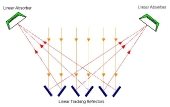




Nature laughs with flowers
Founder of Mostadam Eco Design (Palestine)
www.instagram.com/mostadam_eco_design/
https://www.facebook.com/MostadamEcoDesign/












Nature laughs with flowers
Founder of Mostadam Eco Design (Palestine)
www.instagram.com/mostadam_eco_design/
https://www.facebook.com/MostadamEcoDesign/




Nature laughs with flowers
Founder of Mostadam Eco Design (Palestine)
www.instagram.com/mostadam_eco_design/
https://www.facebook.com/MostadamEcoDesign/




Moderator, Treatment Free Beekeepers group on Facebook.
https://www.facebook.com/groups/treatmentfreebeekeepers/









Nature laughs with flowers
Founder of Mostadam Eco Design (Palestine)
www.instagram.com/mostadam_eco_design/
https://www.facebook.com/MostadamEcoDesign/
 1
1





















 20% Clay, 40% Silt, 40% Sand, it just lacking in organic matter.
20% Clay, 40% Silt, 40% Sand, it just lacking in organic matter.
 . I checked that list of plants and it lists plants from warm to cold climates as so:
. I checked that list of plants and it lists plants from warm to cold climates as so:


Nature laughs with flowers
Founder of Mostadam Eco Design (Palestine)
www.instagram.com/mostadam_eco_design/
https://www.facebook.com/MostadamEcoDesign/





Tomas More wrote:This sounds like a really fun project. Do you have a budget? The image that pops into my mind is the hanging gardens of Babylon. Layers of plants going up in height with fountains and a waterfall. Maybe a artificial stream. Maybe you could set it up with a artificial rain machine. What about a cool beautiful outdoor place for the factory workers to sit surrounded by green?
"Instead of Pay It Forward I prefer Plant It Forward" ~Howard Story / "God has cared for these trees, saved them from drought, disease, avalanches, and a thousand tempests and floods. But he cannot save them from fools." ~John Muir
My Project Page





|
She laughed at how small it was, and now it is even smaller. Poor tiny ad:
Learn Permaculture through a little hard work
https://wheaton-labs.com/bootcamp
|




